Awesomeness Round-up – 7/12/10
- By Maggie Masetti
- July 12, 2010
- 1 Comment
Last week Goddard shipped a piece of new technology developed for the James Webb Space Telescope to the European Space Agency for integration with the Webb’s Near Infrared Spectrograph (NIRSpec). This new piece of tech are the microshutters, tiny little shutters as small as the width of a human hair. They are tiny doorways that focus the attention of the infrared camera on specific targets to the exclusion of others. They will focus in on objects like very distant stars and galaxies. Learn more about the microshutters in this news release.
John Mather, one of the project scientists for Webb Telescope, also won a Nobel Prize recently. This is a review of the talk he gave at the Lindau Nobel Laureates Meeting, where he took the audience on both a short history of the Universe, and a history of how we’ve come to understand it. (We talked to him last summer about making data beautiful.)
Here is John Mather posing for a picture with James Webb’s son, along with astronaut John Grunsfeld, journalist/writer Miles O’Brien, and scientist Heidi Hammel, at the World Science Fair in NYC in June.
John Grunsfeld just became the deputy director at the Space Telescope Science Institute recently – and now he’ll also be a research professor at Johns Hopkins as well! We interviewed Dr. Grunsfeld about his background in astronomy on a previous podcast!
The Lunar Reconnaissance Orbiter (LRO) took this amazing image of the Apollo 16 landing site. I think it’s amazing that you can actually see the rover tracks.
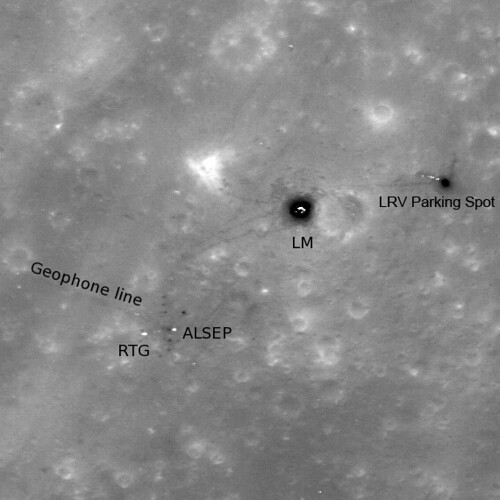
Credit: NASA’s Goddard Space Flight Center/Arizona State University
This celestial fireworks display is a star cluster called NGC 3603. The young, hot stars are surrounded by dust and gas, the raw material of new star formation. This object is located about 20,000 light years away in the direction of the constellation Carina.
NGC 3603 looks like fireworks – but the “M17 SWex” dark star-forming cloud looks like a dragon! The below image was captured by the infrared Spitzer Space Telescope. Though this cloud is dark, stars are being formed within – just not the typical massive ones you see in star forming regions. Scientists think that perhaps this dark cloud is an example of a very early phase of star formation where massive stars have not yet been ignited. The news release has more information about this cosmic, dragon-shaped cloud and the mystery that surrounds it.
Planetary system formation also has a few mysteries as well. Though we’ve studied our own solar system and have developed a standard model for how solar systems form, the discoveries of planetary systems around other stars have challenged this model. For example, our solar system has inner, rocky planets and outer gas giants – all of which are in the same plane of rotation as our star. But some extrasolar planetary systems have gas giants in close orbits around their stars – and they have radically different planes of rotation from their primary star. Read more about these “renegade” planets.
You can get a look at some of the science that goes on at Goddard on the new Geeked on Goddard blog!
Want to go behind the scenes at Fermilab? You can get tours (and take pictures) when you register for one of these tours.
A recent article in National Geographic reported on a ten-year experiment led by Randolf Pohl of the Max-Planck Institute of Quantum Optics in Germany that may change particle physics. If correct, the proton (one of the particles in the nucleus in atoms) may be smaller than previously thought. Pohl’s team used a special particle accelerator to alter hydrogen atoms, replacing the atom’s single electron with the 200-times-more-massive muon. Because the muon is so much heavier than the electron, it orbits the nucleus more closely and is thus more sensitive to the proton’s size. Laser light fired at the atom should cause the muon to excite to a higher energy level and then release X-rays when it moves back down to a lower energy level. Yet the X-rays expected were not detected. Because both the distance between these energy levels and the frequency of the X-rays that should be emitted is determined by the size of the proton, the team varied the number they used for the size of the proton. The expected X-rays were eventually detected… but at a value for the proton that was 4% smaller than the size a proton should be. Currently the team has no explanation – but if this result is correct – it could cause a big shake-up in particle physics!
This article in Nature discusses what the implications could be.
It’s exciting to think that as much as we do know, that there are still so many mysteries to be solved.


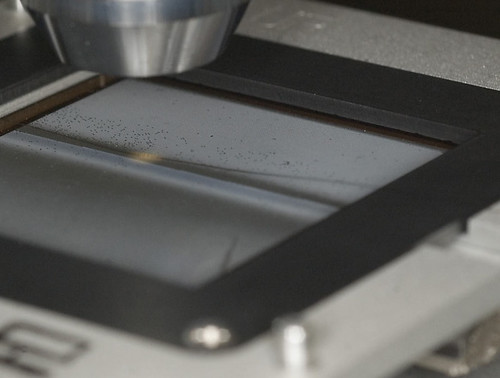
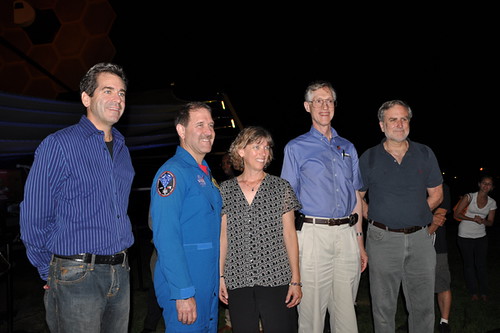
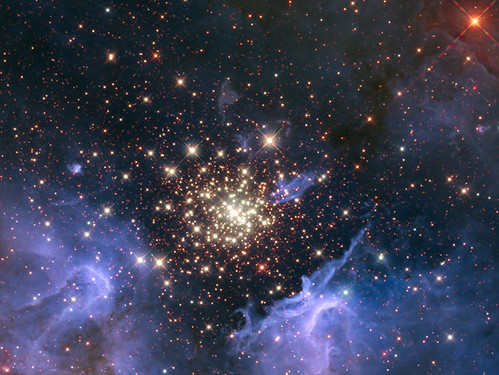
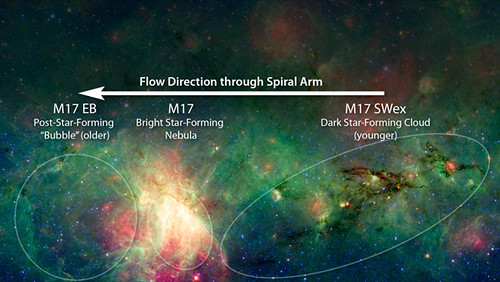

[…] may solve one or two… or alternatively, there’s always NASA Blueshift‘s weekly blog of awesomeness, describing their favourite bits of space news in the last seven […]